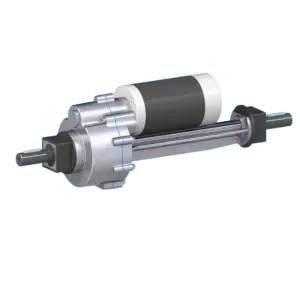The transaxle is a critical component in a vehicle’s drivetrain, responsible for transmitting power from the engine to the wheels. It combines the functions of a transmission and an axle, hence the name “transaxle.” Commonly found on front-wheel drive vehicles, this integrated unit is used to improve weight distribution and overall vehicle performance. However, the question often arises: Are transaxles only suitable for manual transmission vehicles?
To answer this question, it’s important to understand the role of the transaxle in a vehicle’s driveline. In manual transmission vehicles, the transaxle not only transfers power from the engine to the wheels, but also allows the driver to manually shift gears and control the vehicle’s speed and torque. This manual control of gear selection is a defining feature of manual transmission vehicles, and the transaxle plays a central role in enabling this function.
In contrast, automatic transmission vehicles also use a transaxle, although there are some differences in design and operation. Automatic transaxles integrate a complex system of hydraulic, electronic and mechanical components to automatically shift gears, giving operators a smoother, more convenient driving experience. Despite these differences, the basic purpose of a transaxle remains the same: to transfer power from the engine to the wheels, whether in a manual or automatic transmission vehicle.
One of the main differences between a manual transaxle and an automatic transaxle is the arrangement of the gears and clutches. In a manual transaxle, the driver manually engages and disengages gears using the clutch pedal, while in an automatic transaxle, gear changes are managed by a torque converter and a series of planetary gear sets. This difference in gear mesh is a defining feature of both transmission types, but both rely on a transaxle to transfer power to the wheels.
It’s worth noting that while transaxles are typically associated with front-wheel drive vehicles, they can also be found in rear-wheel drive and all-wheel drive configurations. In these setups, the transaxle is usually located at the rear of the vehicle and is responsible for transferring power to the rear wheels. This versatility highlights the importance of the transaxle in a variety of driveline configurations, regardless of transmission type.
Transaxle design and construction are critical to its performance and durability. It consists of several key components, including the transmission, differential and final drive, all housed in a single unit. This integrated design not only saves space, but also simplifies the transmission system, reducing the number of moving parts and potential failure points.
In a manual transaxle, the transmission components consist of a series of gears and shafts that allow the driver to manually select the appropriate transmission ratio based on driving conditions. The differential, on the other hand, distributes power from the transaxle to the wheels while allowing them to spin at different speeds, which is essential for smooth cornering and maneuverability. The final drive consists of a ring gear and pinion gears, which further regulate the speed and torque of the power transmitted to the wheels.
The structure of the automatic transaxle is more complex and includes additional components such as a torque converter, valve body and electronic control unit. The torque converter acts as a fluid coupling that transfers power from the engine to the transmission, allowing for smooth, seamless gear changes. The valve body controls the flow of transmission fluid, directing it to the appropriate clutch and belt to engage the desired gear. The electronic control unit manages the overall operation of the automatic transaxle, monitoring various sensors and inputs to optimize gear selection and shift points.
Despite these differences, the basic functionality of the transaxle remains the same in manual and automatic transmission vehicles. It acts as a link between the engine and the wheels, ensuring efficient transmission of power to propel the vehicle forward. This critical role emphasizes the importance of the transaxle in the overall vehicle performance and drivability.
In summary, transaxles are not unique to manual transmission vehicles. It is an important component of both manual and automatic transmission vehicles. While the design and operation of the transaxle may differ between the two transmission types, its basic purpose of transferring power from the engine to the wheels remains the same. Whether in a front-wheel drive, rear-wheel drive or all-wheel drive configuration, the transaxle plays a central role in the driveline, helping to improve the vehicle’s overall performance and functionality.
Post time: Jun-07-2024


